Let’s say you’re on vacation by the ocean, and you see some fun water activities on offer, you’ll often find both scuba diving and snorkeling will be on that list. But what’s the difference between the two? And is one better than the other?
At first look, the distinction between scuba diving and snorkeling seems simple: one uses gas, while the other uses a mask with a tube. But it goes far beyond that. Both considered extreme sports, scuba diving and snorkeling have techniques that set them apart. There are other differences in terms of equipment, purposes, and hazards.
Before diving headfirst, you must first understand how to get started with extreme watersports, just like any other athletic activity. Learning everything there is to know about the sport you’re interested in is one of the best methods to accomplish this.
After reading this short piece, you’ll know the difference between snorkeling on the ocean’s surface and scuba diving in the depths.
Quick Jump
TLDR
Snorkeling involves swimming near the water’s surface while breathing through a snorkel mask. You’ll need high-quality gear, but it’s not as expensive or dangerous as scuba diving. When snorkeling, your head and nose are submerged, and the mask creates a seal that prevents water from filling the tube.
Scuba diving is a technique for diving deep beneath the ocean’s surface while wearing a wetsuit and breathing through an oxygen tank. However, you’ll need a lot of equipment, and doing it incorrectly or frequently can be costly and risky. Your whole body is submerged, and your eyes and nose are hidden under a full face mask.
You will need to adjust to breathing through the regulator coupled with an oxygen tank strapped to your back.
The main differences between scuba diving and snorkeling are the depth of the water, equipment, and the dangers faced when partaking in each activity. There are similar purposes to doing both, such as looking at fish and underwater objects, however, snorkeling is also used as a sport, and scuba diving is used in a professional capacity by the military and civil engineers.
What’s The Difference Between Snorkeling and Scuba Diving?
Let’s discover the main differences between snorkeling and scuba diving by looking at the technique, purpose, equipment, and dangers of both.
Snorkeling

Snorkeling is swimming using a snorkel, consisting of a mask and a tube that allows you to breathe through your mouth while floating near the water’s surface.
Snorkeling allows you to see fish, coral reefs, and marine plants just below the water’s surface. While it’s primarily for fun, snorkeling can be combined with shallow water spearfishing and a few competitive underwater sports such as underwater hockey.
Just because snorkeling is less expensive than scuba diving doesn’t imply you should skimp on good-quality gear. There are still risks connected with snorkeling, so use only the best masks and don’t forget your sunscreen. For your next snorkel adventure, here is a selection of the best full-face snorkel masks.
Technique
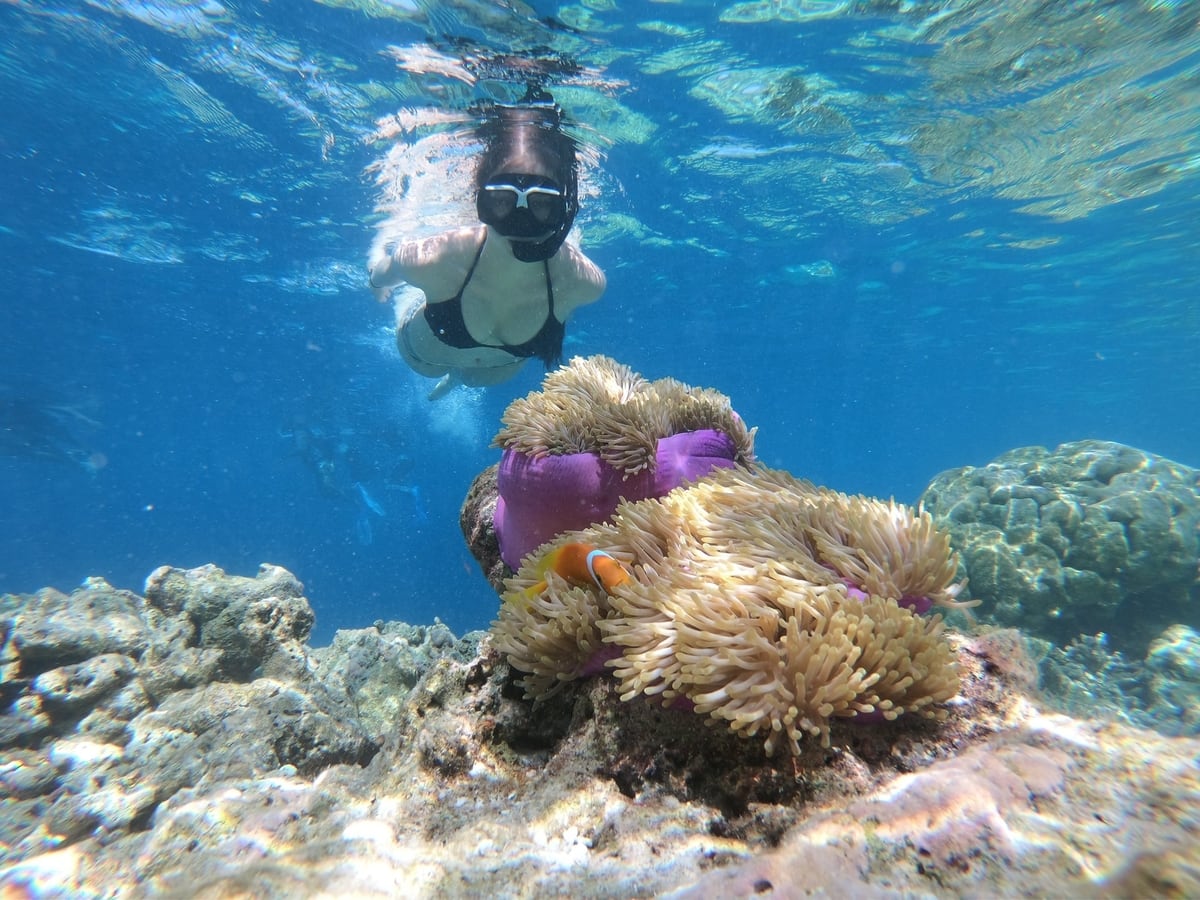
Due to the risk of the snorkel tube flooding, just your face is submerged when snorkeling. When the snorkeler returns to the surface, they expel water either with a sharp exhalation or tilting the head back soon before reaching the surface.
Equipment
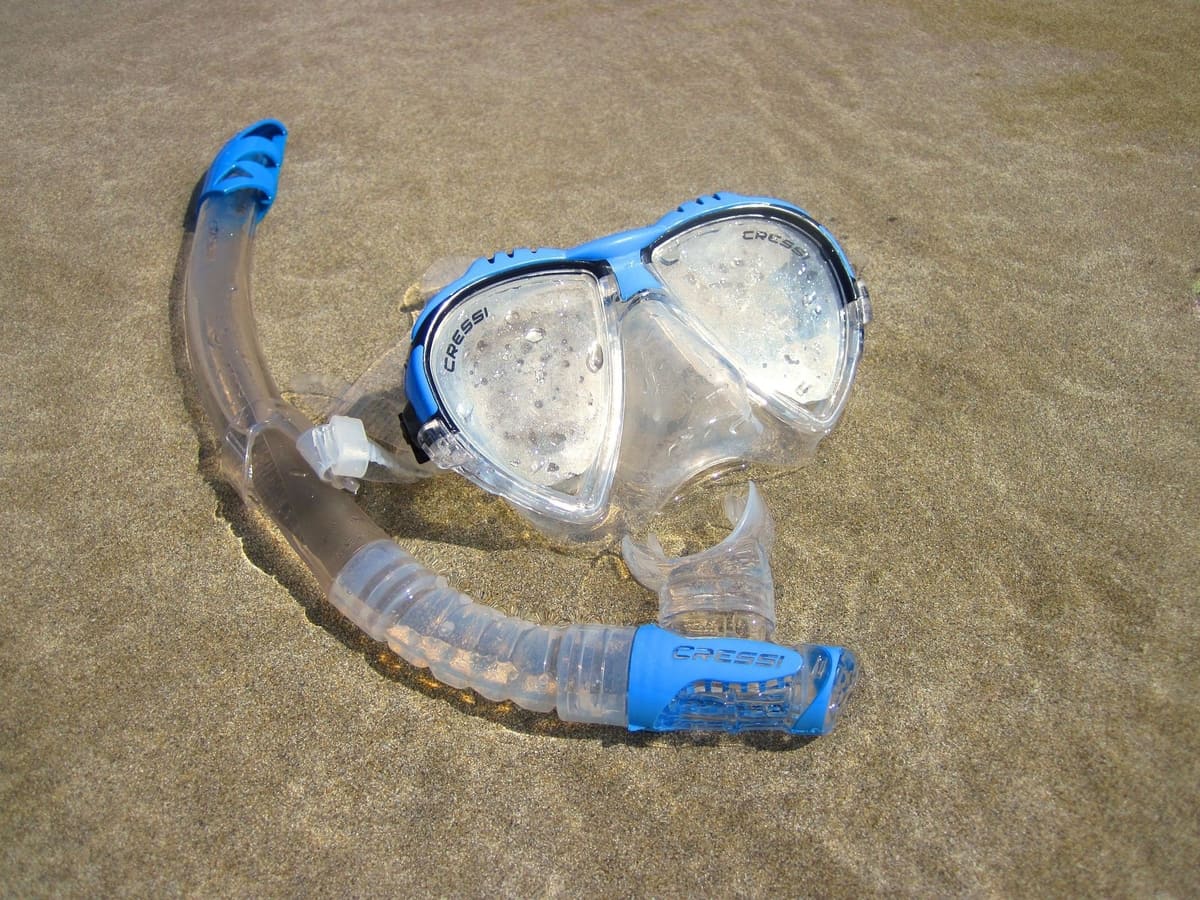
Snorkeling is a reasonably inexpensive sport that requires little equipment:
- Snorkel Mask – A diving mask that has an L or J-shaped tube and a mouthpiece at the lower end of the tube.
- Snorkeling Fins – A pair of fin-shaped shoes worn on the feet that aid with underwater movement.
- Life Vest – An inflatable sleeveless jacket worn by snorkelers to keep them afloat and reduce the risk of drowning.
- Wetsuit/Rash Guard or Sunscreen – It is recommended that you wear a full-body suit or rash guard that defends against UV rays and covers the torso, but you can also just use some strong SPF50+ sunscreen.
- Snorkel Camera – A little waterproof camera for filming fish, coral, and the sea.
There are also different types of snorkel tubes:
- Dry Snorkels – The most distinguishing aspect of a dry snorkel is the presence of a floating object in the tube that forms a seal, keeping the inside of the snorkel dry. Because the object will float up and prevent any water from seeping in, this is ideal for short underwater dives.
- Semi-Dry Snorkels – A regular snorkel and a dry snorkel are combined in this device. There is no floating object inside this tube to establish a seal. Instead, it includes a splash guard on top that helps to filter out any water. This is not a snorkel tube that functions well underwater because it lacks a specific seal. Instead, semi-dry snorkels are far better for staying at the water’s surface.
Purpose
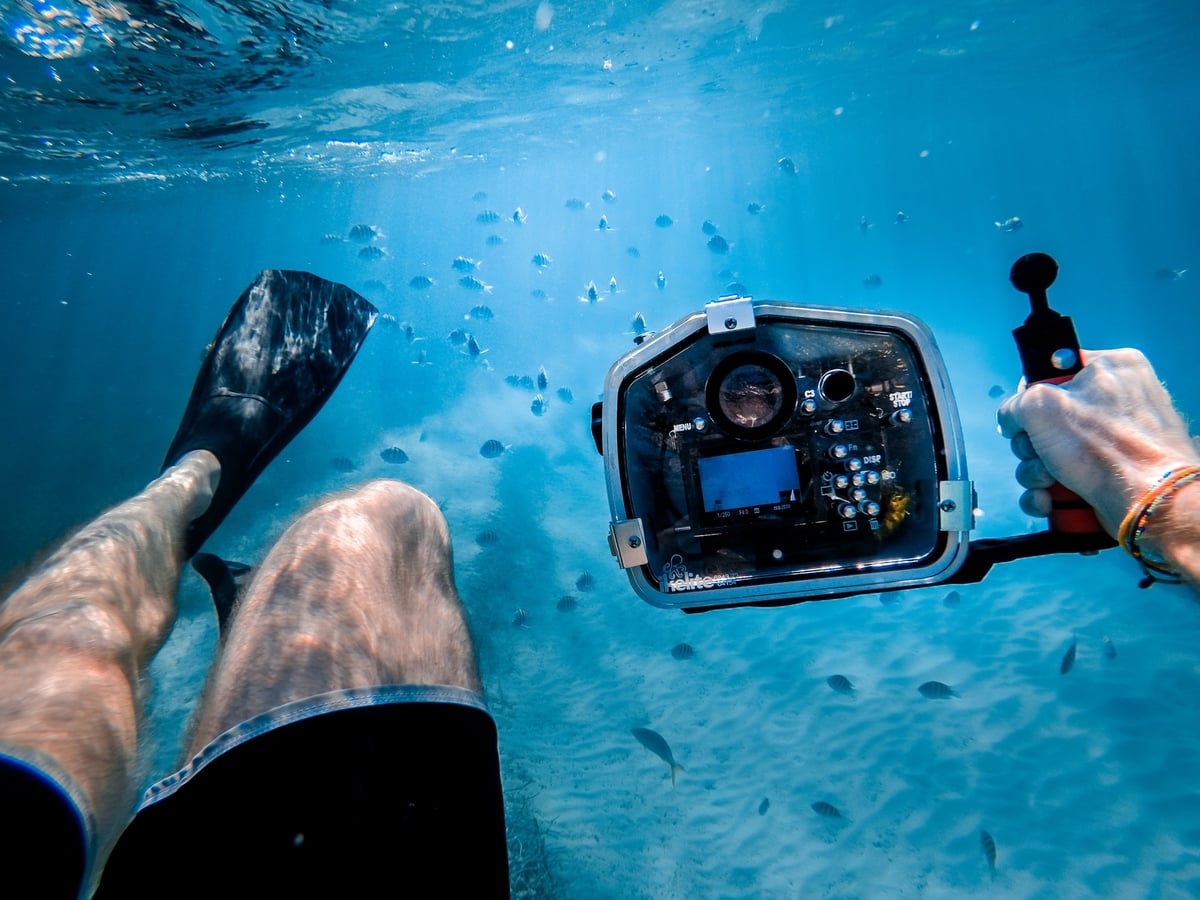
As snorkeling is mainly used for fun, observing fish and algae and coral reefs are some of the recreational uses for snorkeling. Especially in water bodies with little waves and warm seas. Exciting objects can also be seen at the water’s surface, such as tectonic plates or underwater volcanoes.
The sport is used for competitive underwater sports such as underwater hockey as well.
Underwater hockey, also known as Octopush, is a limited-contact sport in which two teams battle to propel a puck across the bottom of a swimming pool and into the other team’s goal using a hockey stick (or pusher).
Dangers
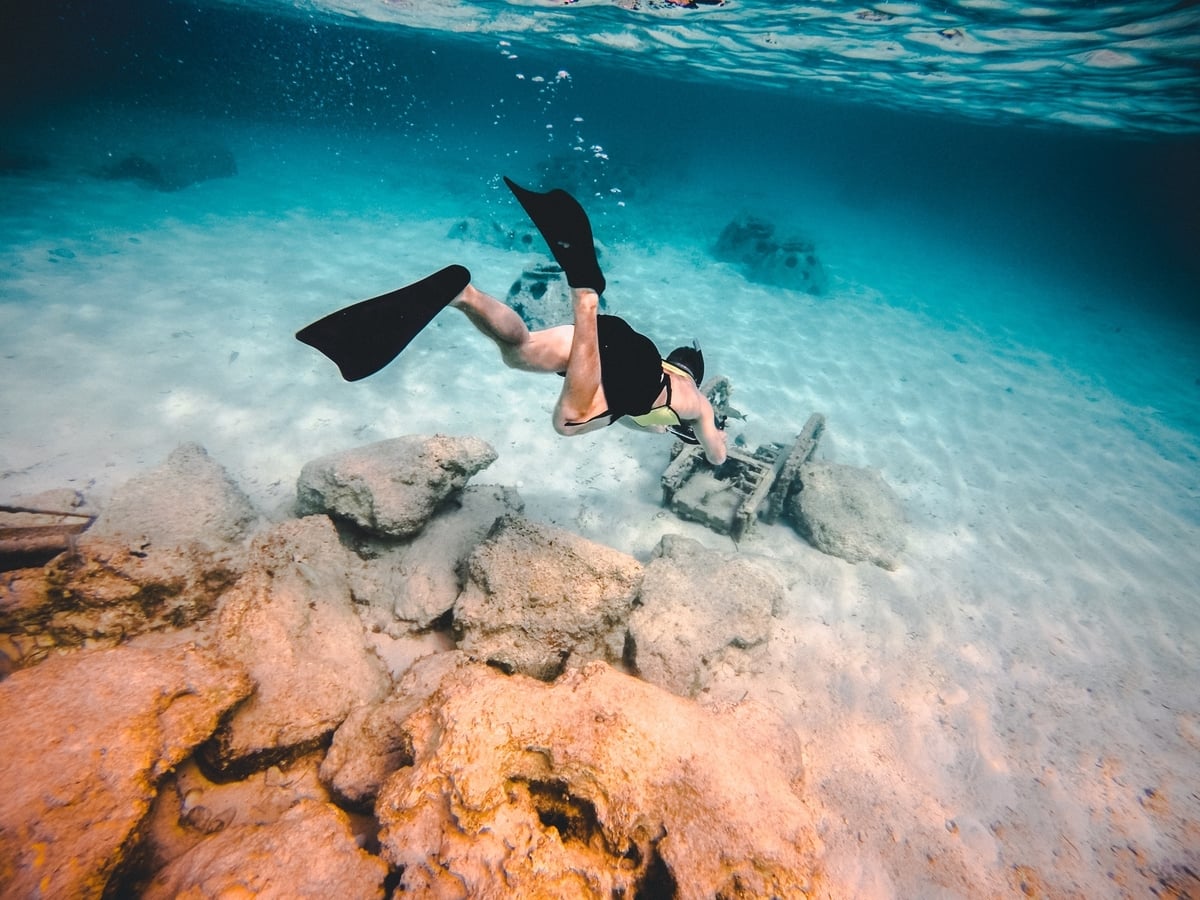
Snorkeling is relatively risk-free; the only real danger is being in the way of motorized boats or jet skis, which may not be able to see your snorkel from afar.
Cuts and scratches from rocks and corals, jellyfish stings, and other injuries from underwater living forms are also possibilities.
Snorkeling over lengthy periods on the water’s surface can also cause sunburn. This can be avoided by using the proper amount of sunscreen and wearing a rash guard or wetsuit with UV protection.
Scuba Diving

Wearing tight-fitting diving gear and breathing through an oxygen tank, scuba diving allows you to dive deep inside the water to inspect the sea or lake’s bed.
Scuba diving is utilized for leisure activities such as ice diving, spearfishing, and cave diving. Civil engineers and the military use it professionally as well.
Due to the number and type of equipment required, it can be rather costly. Scuba diving can also be dangerous if you employ improper methods or use the wrong gear. Equipment failure is also a possibility, so make sure you use only high-quality tools when you go diving.
Because it is a full-body workout, it can also induce muscle soreness. When you have a sore body after scuba diving, here are some recommendations on how to speed up muscle recovery.
Technique
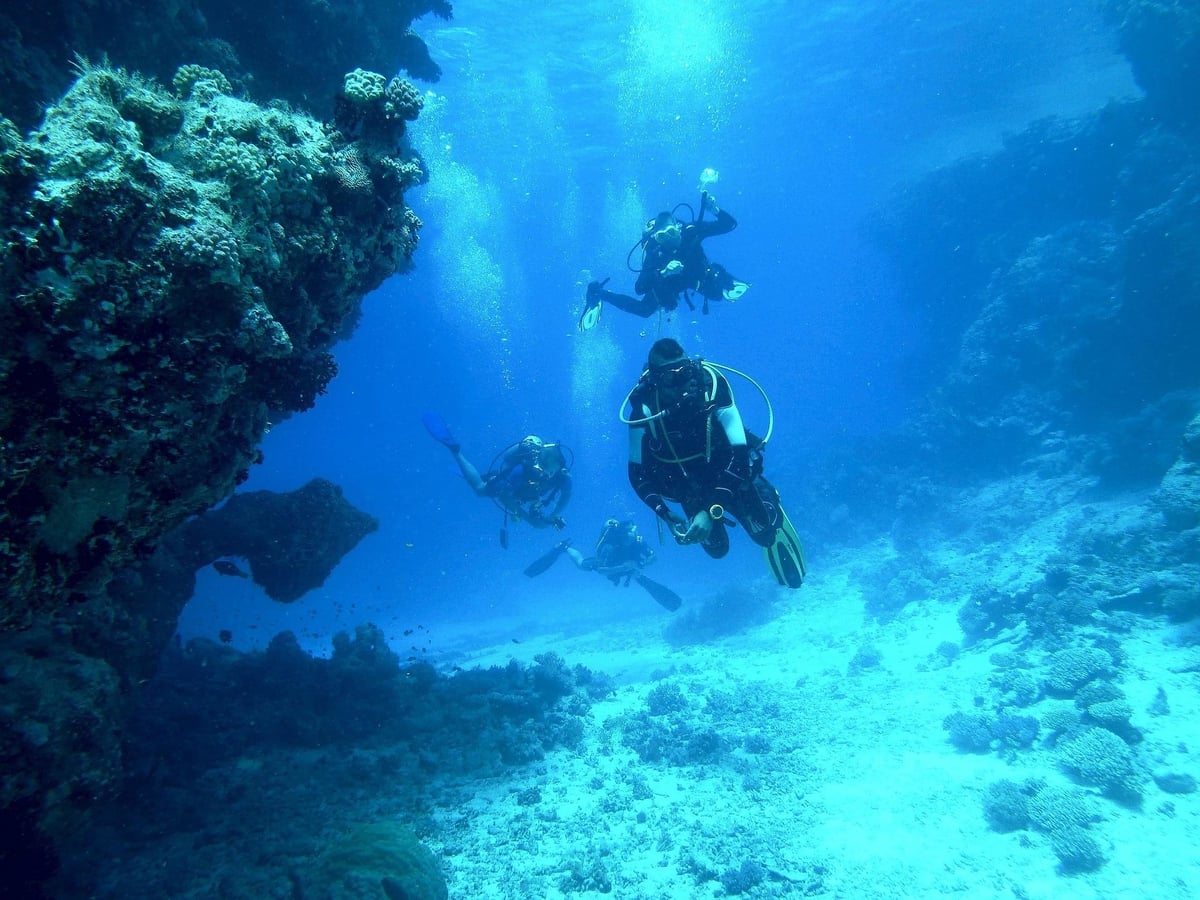
The entire body of the swimmer is submerged when scuba diving. A diving mask covers the diver’s nose and eyes. The diver cannot breathe in via the nose unless wearing a full-face diving mask but adapts to inhaling through a regulator’s mouthpiece.
Equipment
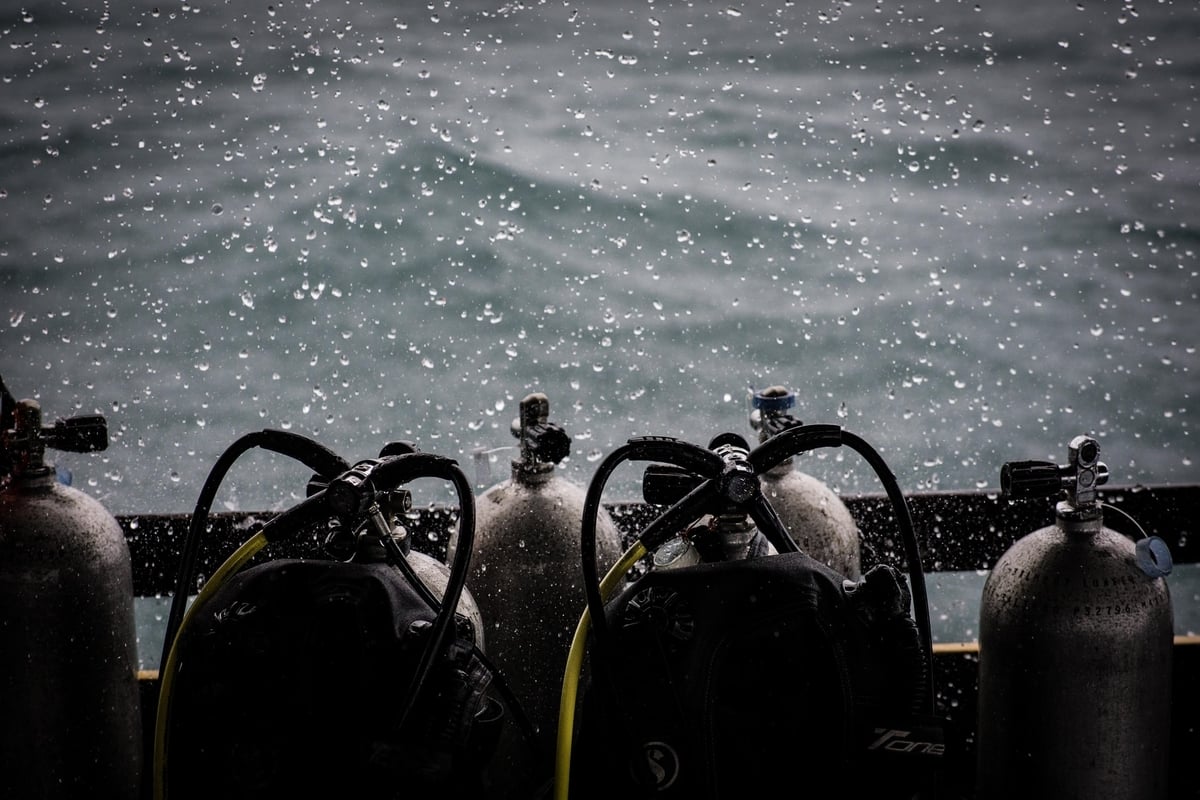
There are two types of divers:
- Recreational Divers – Recreational diving is done for the sole purpose of having fun and enjoying the undersea world. Divers seek out dive spots with high visibility, warm water, and fascinating and/or picturesque scenery to maximize their experience.
- Tec Divers (Technical) – Tec divers are experts in technical diving. Technical diving allows you to go beyond the recreational “no stop” boundaries of diving. This allows you to plan longer dives at shallower depths, as well as dives to deeper depths and more advanced sites. Technical (tec) diving allows you to dramatically extend your diving abilities and knowledge, as well as present you with experiences and exploring chances that few others will ever see.
Scuba diving equipment is also designed to work in a variety of temperatures and environments:
- Tropical Scuba Equipment – You need minimal exposure protection in warm, clear water and can use lightweight, streamlined scuba components. When diving in 75°F or warmer water, use this scuba equipment.
- Temperate Scuba Equipment – When you dive in temperate climates, you have the most versatility because you can dive in the tropics and cooler water. Use this scuba equipment in water that is 60-75°F.
- Cold-water Scuba Equipment – Diving is typically excellent in cool areas. You can comfortably go scuba diving in cold water with proper exposure protection and equipment. Use this scuba gear in water that is less than 60°F.
Scuba diving needs far more equipment than snorkeling and this can be pretty costly:
- Primary mask and backup mask – Although any diving mask will suffice, tec divers prefer small masks for the least resistance in the water. A backup mask is carried in your pocket in case the primary mask is lost or damaged.
- Fins – Tec divers frequently use dry suits, requiring huge, open-heel adjustable fins.
- Wing-typed Buoyancy Control Device (BCD) and harness – Between the harness and the cylinder is a high-capacity BCD with a backup gas bladder. The backup bladder is essential because a tec diver may be too heavy to swim to the surface if the primary BCD fails. The harness is a shoulder, waist, and crotch strap device that secures tanks to the tec diver’s back and has D-rings on the shoulders and waist for attaching equipment.
- Primary and secondary regulator – The primary regulator contains a seven-foot hose for sharing gas with another diver in an emergency. If the primary regulator fails, the secondary regulator can be used.
- Twin cylinders, decompression cylinders/stage bottles – High-capacity cylinders store high-pressure compressed air, enriched air, or trimix, depending on the dive. A separate decompression cylinder and regulator are attached to a side harness. Extra tanks prolong dive time and carry gas for decompression optimization.
- Multi-Gas dive computers and submersible pressure gauge (SPG) – Dive computers, one primary and one backup, track and display decompression requirements and allow tec divers to switch between different gas mixtures to improve decompression. SPGs constantly indicate how much air is left in the cylinders if they are not incorporated with the dive computers. Dive watches are frequently used to supplement dive computers. Here’s a list of affordable dive watches that you should bring on your next scuba excursion.
- Drysuit – Insulates for a comfortable dive over a long period.
- Other equipment – Compass, slate, Z-knife, emergency signaling devices, backup dive tables, shears, delayed surface marker buoy (DSMB), safety reel, and lift bag.
Purpose
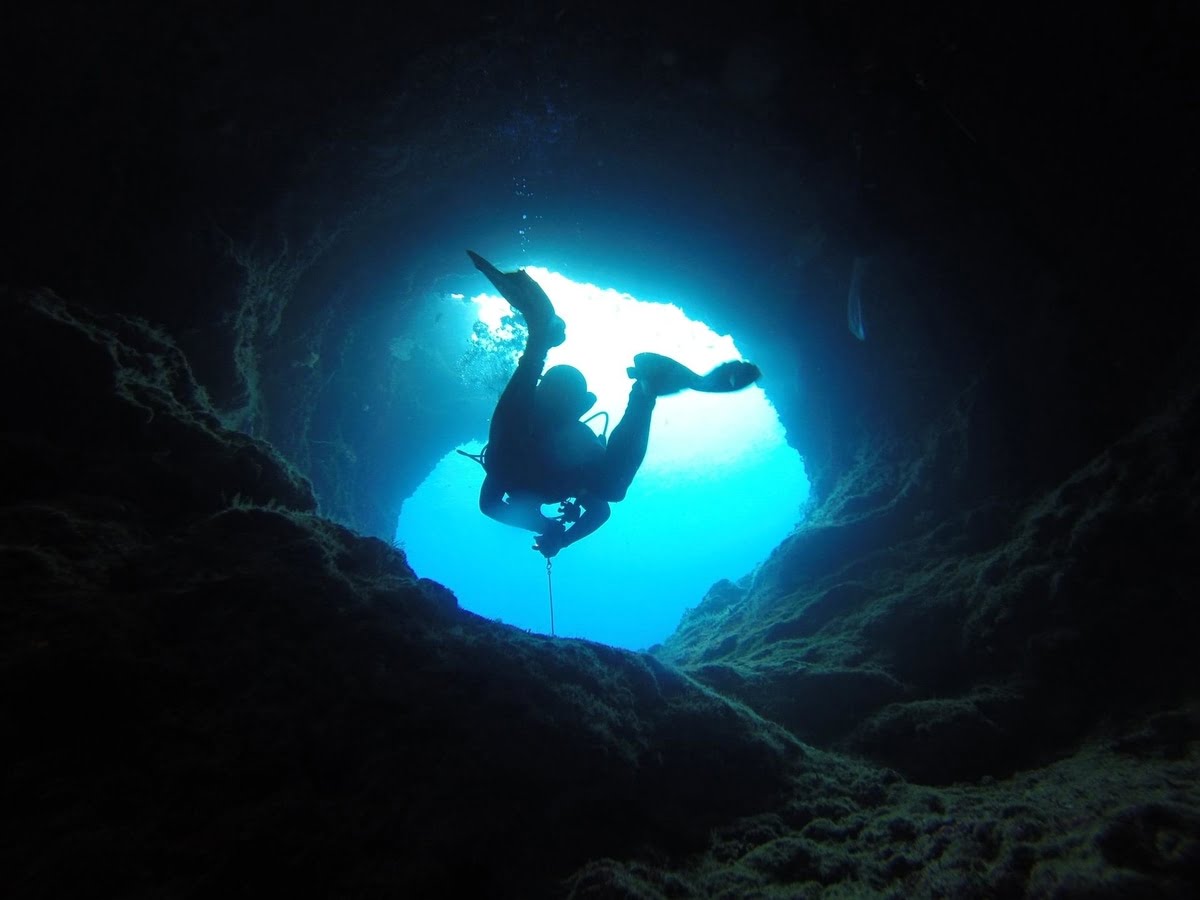
Scuba diving allows you to go to considerably deeper depths than snorkeling does. It’s commonly used for leisure purposes, such as exploring caves and shipwrecks or deepwater spearfishing.
A popular recreational activity is cave diving. For a unique experience, it mixes the thrill of scuba diving with the wonder of spelunking. Cave and marine habitats contain some of the world’s most strange and diversified ecosystems. Light, food, and oxygen are scarce in underwater caves. They’re teeming with life that humanity hasn’t seen before and still doesn’t fully comprehend because of these unusual circumstances.
However, scuba diving isn’t simply a hobby for professional divers. It’s also used for professional applications such as underwater welding, civil engineering, offshore construction, and military diving activities. Engineer divers are mainly trained to work on marine structures underwater.
They need to inspect these structures and make sure they are still sound enough to function, or if they need repairs. Divers can also be employed in any armed branch of the military, and some of their main roles include underwater combat, reconnaissance, infiltration, hydrographic survey, demolition and search and recovery.
As mentioned above, scuba diving can also be used for body recovery and missing person searches if the person went missing near the water. This is incredibly dangerous though, as the same currents that sucked in the victim can also do the same to the divers, so they have to undergo extensive scuba diving training in unsafe territories.
Dangers

If not done correctly, scuba diving can pose serious risks and consequences. Many people are shocked to learn that recreational scuba diving can cause medical issues, even in safe environments.
Simple “squeezes” are the most prevalent medical concerns. During descent, these can harm your middle ear or face mask. Earache is caused by squeezes. The difference in the pressure between the air spaces of your ears and mask and increasing water pressure as you move deeper into the water causes the pain. Squeezes affecting the inner ear or your sinuses are rare, however.
Contact with fish and other marine animals, some types of coral, and hazards such as exposed jagged metal on wrecks or fishing lines can result in cuts, scrapes, and other injuries to the arms and legs.
The most hazardous medical conditions include pulmonary barotrauma and decompression sickness, known as “the bends.”
Barotrauma occurs during the ascent. As you rise to the water’s surface, the gas inside your lungs expands, injuring the surrounding body tissues. These lung injuries can be severe enough to cause lung collapse in some divers (pneumothorax). Free air bubbles may also enter the bloodstream due to the damage. An arterial gas embolism is a medical term for this.
Chest pain, breathing difficulty, and neurologic problems such as stroke are all common symptoms of arterial gas embolism.
Decompression sickness occurs on the surface of the water and during ascent. Inert nitrogen gas is dissolved in body tissues, and blood and bubbles occur in the blood. The bubbles have the potential to harm numerous human tissues and obstruct blood arteries. Dysfunction of the spinal cord, brain, and lungs are the most prevalent indications of severe decompression sickness.
Fortunately, major medical concerns in recreational scuba divers are uncommon. While millions of people dive each year in the United States, only approximately 90 people die each year. Furthermore, only about 1,000 divers require recompression therapy to cure serious dive-related health concerns worldwide.
Are There Any Similarities Between Scuba Diving and Snorkeling?
Snorkeling and diving share several essential characteristics. Both require a mask, snorkel, and fins. And both provide a clear perspective of the underwater environment. Both can be taught utilizing the PADI System (Professional Association of Diving Instructors). The similarities, however, stop there.
Scuba Diving vs Snorkeling: What’s The Verdict?
Although there are some parallels between scuba diving and snorkeling on the surface, they are not the same. With a variety of distinct aims, tactics, and hazards associated with each activity, it’s evident that the differences between them go more profound than the world’s deepest scuba dive.
Before you begin participating in these sports, you should first determine exactly what you require and take some training courses.


